Purpose of the Project
Scuba diving is an activity which gives you a freedom, experience of weightlessness and an appreciation for our underwater world which is, in my opinion, second to none. Diving opens a world which we don't otherwise experience for ourselves and develops our appreciation for the precious ecosystems of our oceans and waterways. It's great for teaching our younger generations an appreciation for the marine environment and for the conservation of our planet's rich life and habitats. Diving is also a great healer, once trained and confident the feeling of being in the water can be a great improver for one's mental health. Your day-to-day worries melt away and are replaced by an in-the-moment experience.
Scuba diving can be enjoyed by many people who you might otherwise think would be excluded, including those who have disabilities. For example, The Handicapped Scuba Association trains instructors and accredits training centres where disabled people are supported through scuba diving training that is tailored to their individual needs. I would like to make it easier for people who are vision-impaired to feel a sense of empowerment by being able to scuba dive without needing to hold another diver's hand for guidance. This will give the opportunity to be independent and to enjoy an activity that perhaps they hadn't thought for a moment could be a possibility.
One of the challenges involved in scuba diving (and of course a paramount challenge for someone vision impaired) is successful navigation, whether in the sea or in a lake. This is important for everyone because it is critical to safe diving that you plan your dive properly and then you dive your plan. This is to be safe and to ensure that the dive has a purpose and is enjoyable for all.
Training lakes, including Wraysbury, Vobster and Stoney Cove, in the UK offer a diving experience which is in a controlled environment without currents or other hazards that are particular to the open ocean. They have a large number of sunken wrecks deliberately positioned on the lake bed, including boats, taxis, buses, even helicopters and large aeroplanes (such as the fuselage of a 737 Boeing jet). It's very cool to dive these features!
My closest dive lake is Wraysbury Dive Centre, near Staines, in the UK. There are over 50 features underwater and navigating between any two features is a feat I have never managed due to the sheer number of possibilities! Here's the map - quite a challenge, right!
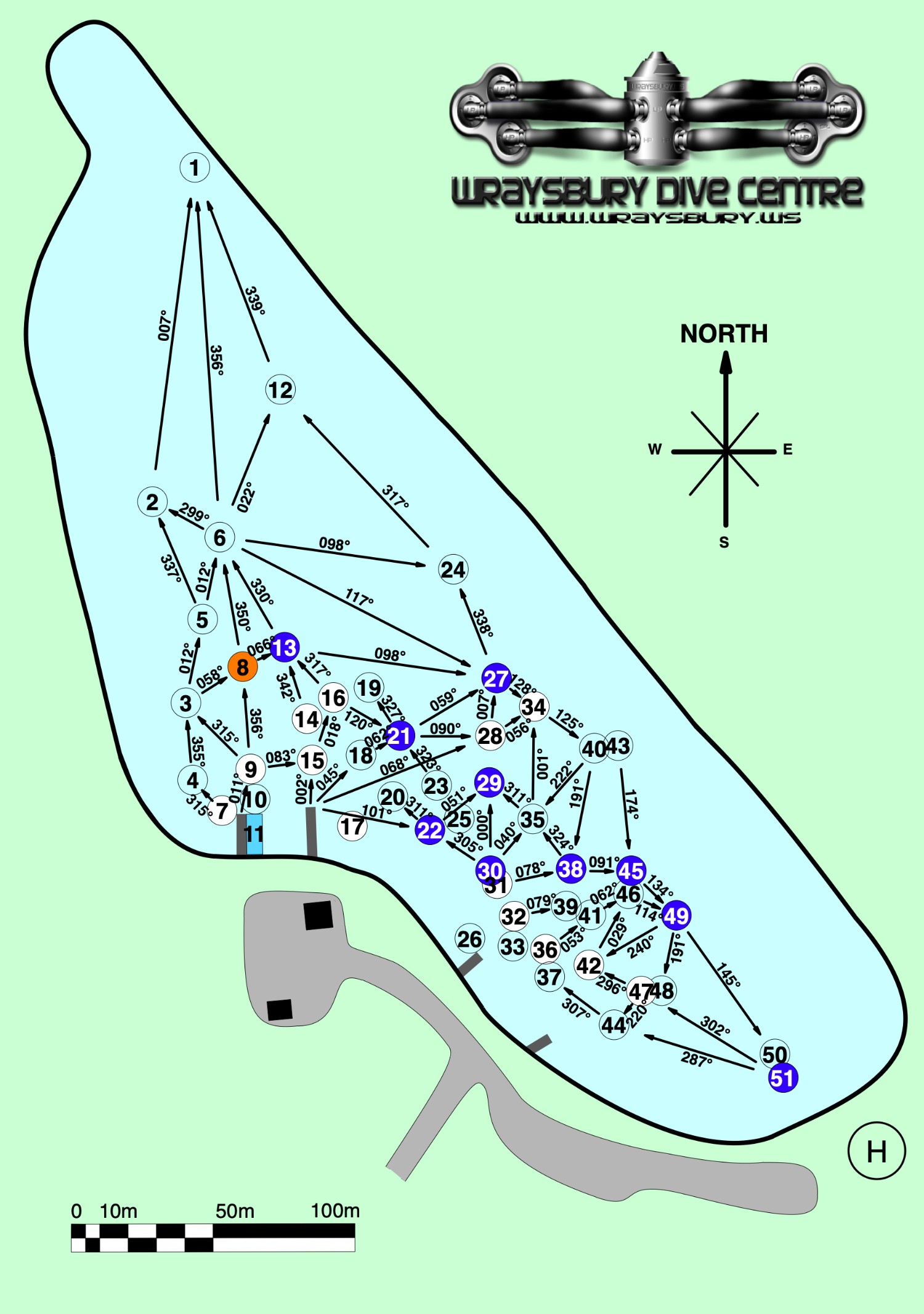
The purpose of this project, which I have named Mercator Origins after the famous cartographer, is to enable the scuba diver to navigate between a set of features or waypoints underwater, with the diver's console instructing the heading and the distance to each target - updating and correcting in real-time according to the diver's movements.
For someone vision-impaired they will be assisted by audio directions, either spoken, as tones or as vibrations in the diver's console they hold. There will also be a Time of Flight sensor to alert the diver in case their are getting too close to the sea/lake bed or other obstacles that could be problematic if collided with. There will also be visual directions on the console, including heading, distance and a graphical indicator to show turn clockwise, turn anti-clockwise or go straight ahead.
Someone who is vision impaired quite possibly will have one or more of their other senses more attuned than someone without impaired vision, such as their sense of touch or their spatial/positional awareness (ie their position in space relative to other objects and to gravity). Someone who cannot see very well, or not at all, may well be able to use their hands (with gloves!) to reach out and feel the boat, the taxi, the bus, etc. and to imagine with great clarity the structure before them.
Therefore, a person does not need to be able to see to be able to enjoy safe scuba diving whilst navigating successfully between points of...
Read more » Mark B Jones
Mark B Jones


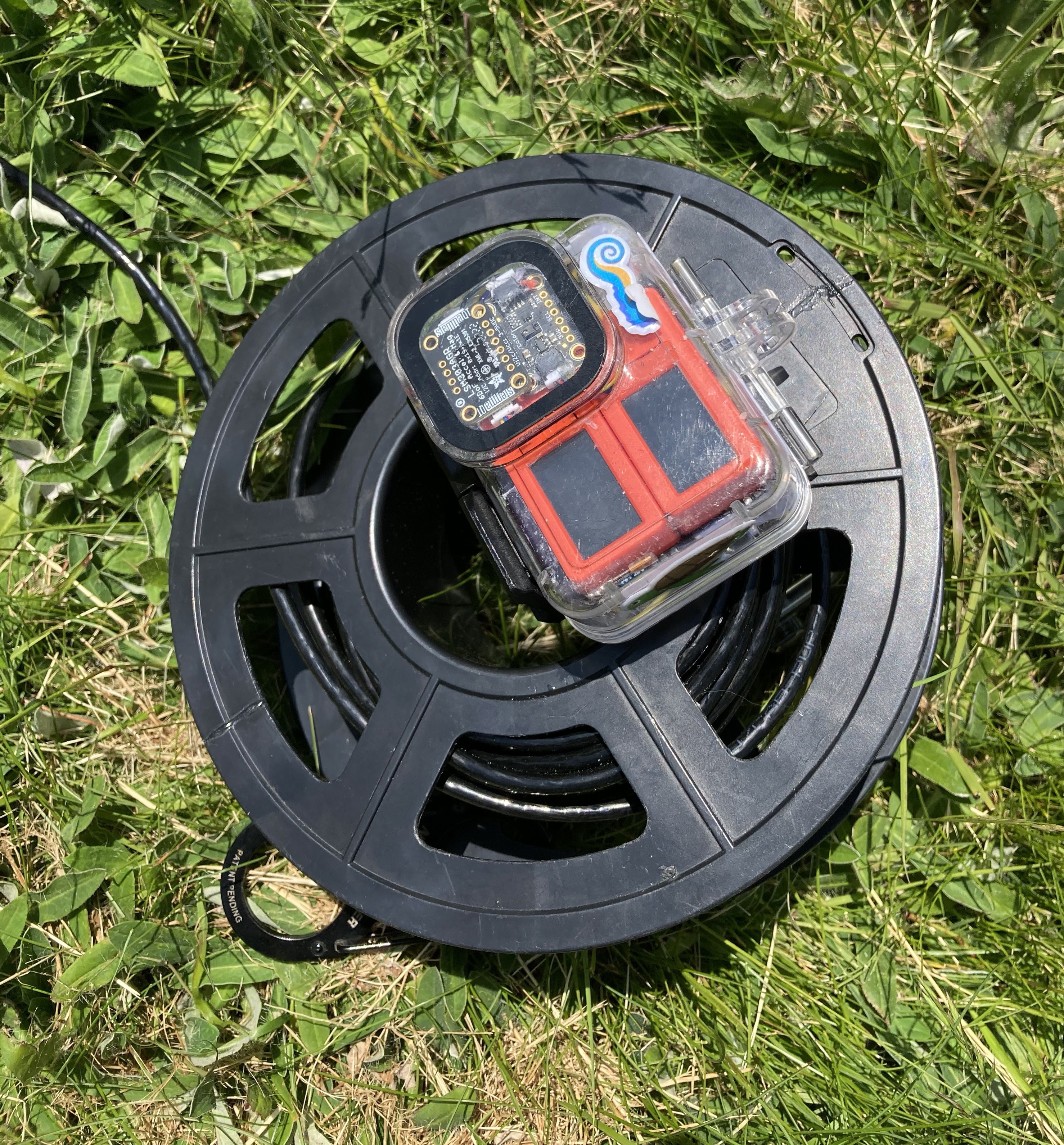

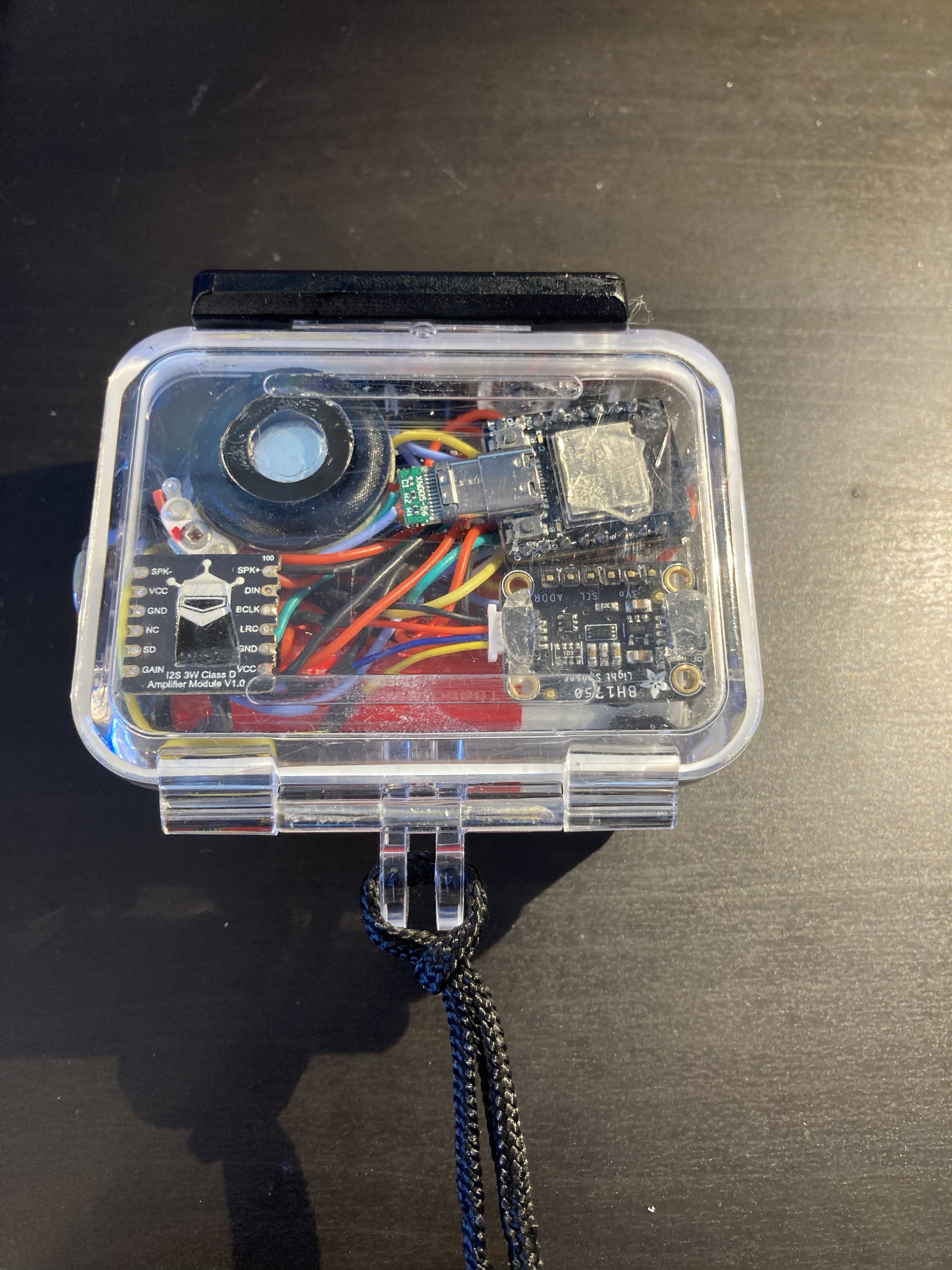




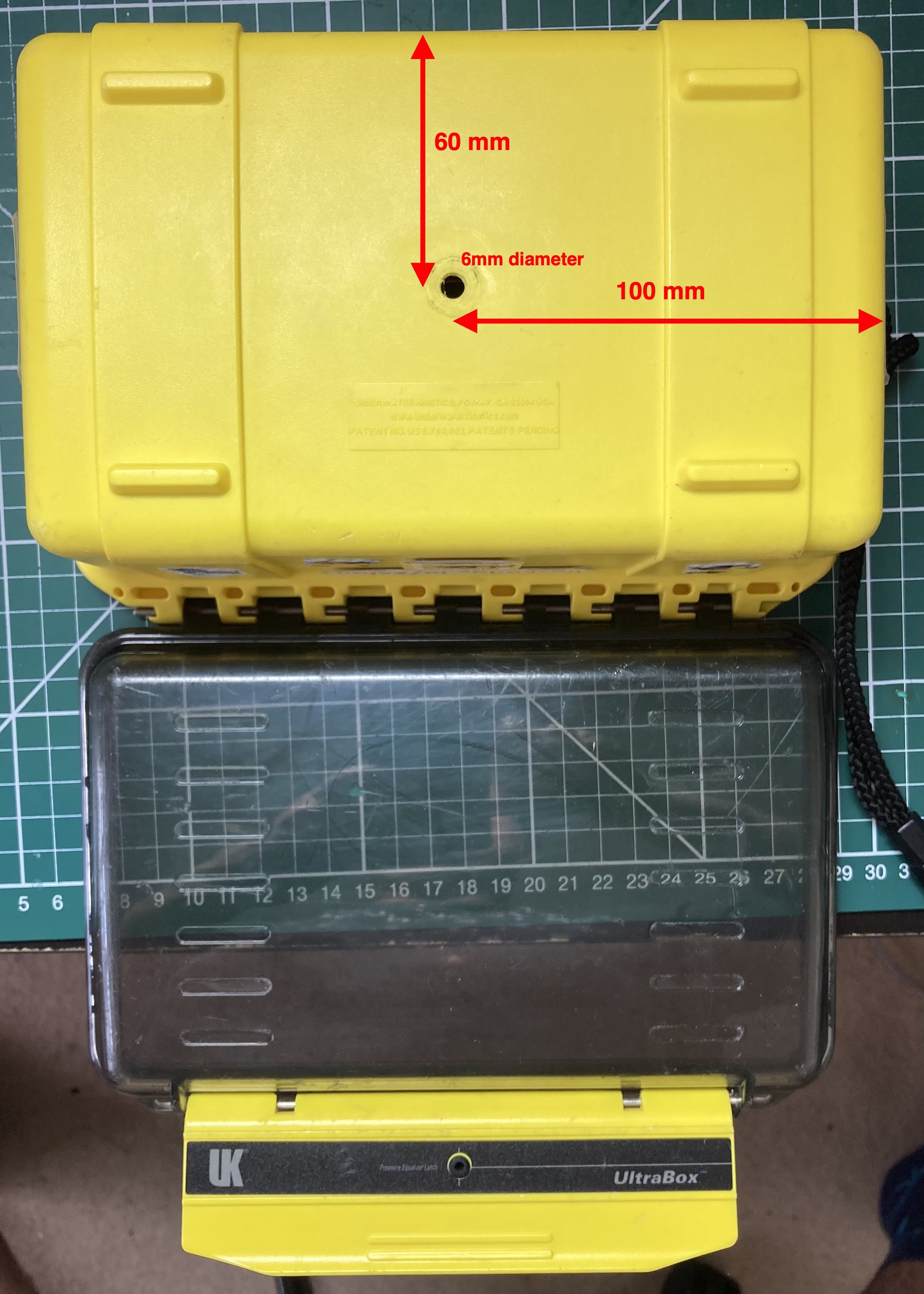



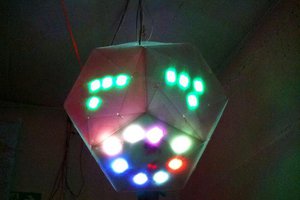
 Jarrett
Jarrett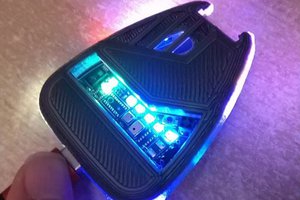
 Xasin
Xasin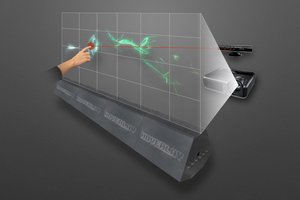
 Moritz Walter
Moritz Walter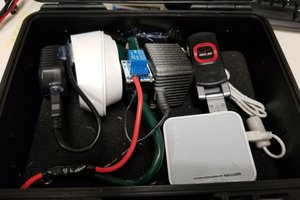
 mark.reeves.78
mark.reeves.78
Hi, thanks for your comment!
Indeed, I have a Garmin InReach Mini 2 which is a hand held emergency satellite comms transponder (waterproof in the case) which can send and receive text messages and location, including SOS messages to a dedicated Garmin support centre who then coordinates with local rescue services - so if the dive boat leaves you in the ocean which does happen (!) then you have a lifeline.
See: https://www.garmin.com/en-GB/p/765374
There is great potential to provide built-in satellite comms within the float box due to the amount of space available for this plus other edge computing devices. I wouldn't integrate with a Garmin or similar unless there is a device out there which has an API, it would need to be an off the shelf Sat comms module that can connect to one of the LEO (Low Earth Orbit) satellite constellations, eg Iridium. Then there is the question of alerting emergency services, for this I would need to find an existing SaaS service that can do this as it's a safety critical function and there are other human factor considerations to take into account.
There is already support for remote internet comms in the float when out of 4G coverage as long as the dive boat has internet access, eg through a satellite internet router. This is because the float can connect to the boat's WiFi network (instead of the 4G WiFi hotspot, or as well as to provide a backup!) providing a satellite hop as a transparent transport to communicate with emergency services and live-tracking dashboards.
It's exactly this kind of potential which you raise which excites me about this mega project. There are so many possibilities for current and future development. The challenge is capturing all the ideas and then executing on a focussed development plan.